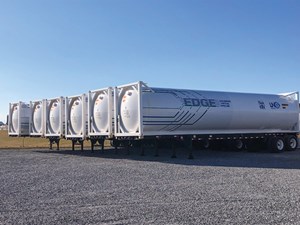Turn out the lights: Can flaring be curbed?
For the Permian basin, the future is bright—and getting brighter all the time. In fact, the McDonald Observatory, near Fort Davis in West Texas, has noted an increase in average sky brightness due to artificial light, increasing from 14% in 2015 to 43% in 2019, Fig. 1. The reason is flaring.
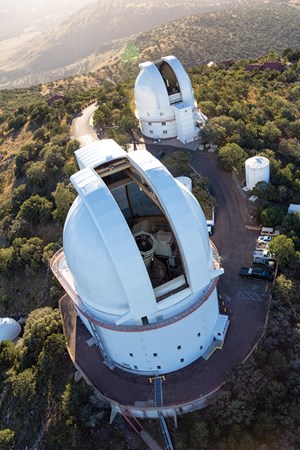
No one wants to flare. The natural gas that is burned off is a valuable fuel, and it should be a second revenue stream. If ever the phrase “burning money” applied to the real world, it is here. What’s more, although flaring is less harmful than simply venting the gas, it still creates carbon emissions not associated with any useful process, such as providing power or propelling a vehicle. But if an operator has no access to pipeline takeaway capacity (or can’t afford it), then the firm has little choice other than to flare or close up shop entirely.
Or do they? In fact, modern technology and smart business models are finally providing an economically attractive alternative to flaring. For the Permian, the Bakken, and the rest of North America’s shale gas basins, the future might be brighter if we turn out the lights.
FLARING UP
One thing is abundantly clear, when it comes to flaring: It’s on the increase. Rystad Energy recently reported that flaring in the Permian hit an all-time-high of 750 MMcfd during the period from July to September 2019, up from just 100 MMcfd a decade ago.
And while the Permian may be the biggest culprit, it is far from the only one. Estimates based on satellite data collected by the Global Gas Flaring Reduction Partnership (which is managed by the World Bank) identified a 48% rise in flaring during 2018, and they pointed to Texas and North Dakota as the main sources. According to the same report, 145 Bcm (5,120.6 Bcf) of natural gas were flared in 2018—equivalent to the total annual gas consumption of Central and South America.
The scale is staggering, and it’s only going up. This is a worrying trend for a number of reasons.
One is environmental. Different industry outlooks give differing views on the future of oil and gas, the competitiveness of renewables, and the need to decarbonize, but no credible voice denies that there is environmental pressure on the sector. Viewed in this light, flaring is a dual liability.
On one hand, it runs contrary to the industry’s efforts to decarbonize oil and gas production processes. The Oil and Gas Climate Initiative recently celebrated progress in stripping methane emissions from member operations but acknowledged that a similar carbon target was needed. Though flaring helps stop the release of methane into the atmosphere, burning it does release carbon dioxide.
Secondly, flaring is the practice of burning natural gas as a waste product, not for some useful purpose. Flared gas powers no generators, fuels no vehicles, heats no homes. All the emissions but none of the utility. That means that some other fuel will probably have to be utilized to do the work that flared gas could be doing.
However, the flaring issue isn’t just a green one, it’s one measured in the red and black of the balance sheet, too. Oil may be the more valuable commodity for American shale producers, but every cubic foot of flared gas is also foregone revenue. At the time of writing, the spot price for natural gas at the Henry Hub was $2.77/MMBtu (admittedly not high by historical standards). Taking the Permian’s 750 MMcfd of flaring, that’s roughly $2.15 million of revenue left on the table every day in the Permian, alone. Alternatively, rather than sell the gas on the market, a proportion could be captured and used to power onsite operations, saving cash rather than generating it. Either way, flared gas could have a better outcome on the bottom line.
In some cases, the impact on the business might be even more profound than foregone revenue or cost-savings. Regulatory clampdowns on flaring, such as those in North Dakota, have so far been relatively ineffective, but at some point, these rules will either be softened or tightened. If it’s the latter—and extra gathering pipeline capacity doesn’t come online—the only choice will be to pull back production, choking regional shale play growth. Some already argue that producers have held back on their potential as a result.
FALSE DAWNS
Is there a solution? Many have been tried. Regulation may play a role, but unless it is matched by a profitable way to make use of the gas, it may have the inadvertent effect of throttling production entirely.
The obvious solution is to increase gathering pipeline capacity, but it is not obviously feasible. The aforementioned Rystad Energy report highlights that activity is moving to areas without current gathering capacity, and current pipelines are already facing bottlenecks. Building more is not only incredibly expensive, but politically difficult—various pipeline projects have run into intense opposition in recent years. To build out pipeline capacity at the scale and reach required to solve the flaring conundrum would be a gargantuan undertaking.
Other methods have been tried, too. Technology exists to capture gas at the wellhead and convert it to a useful, transportable form. Compressed natural gas (CNG), which can then be collected and transported by truck, is an option that has worked for some. However, the logistics involved in the business case can be difficult at low gas prices.
Liquified natural gas (LNG) is more attractive in this respect—up to eight times as much gas can be transferred at a time, slashing associated overheads. However, what has traditionally been labelled as “micro-LNG” for use at wellsites has, in fact, involved extensive expensive equipment and significant installation costs. It has not proved a cost- or space-effective solution for many operators.
MICRO-SCALE LNG TECHNOLOGY
However, new technology is changing the equation. Advances in truly micro-scale LNG have reached a point, where it is now possible to deliver an entire LNG gas capture, liquefaction and transportation solution, with each module the size of a truck-delivered container, Fig. 2.
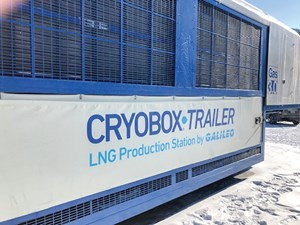
Edge Gathering Virtual Pipelines 2 LLC (“Edge LNG”) turns stranded gas into revenue. Whatever the source—gas trapped in stranded and orphaned wells or vented or flared as a by-product from oil production—Edge LNG produces and distributes this low-cost LNG on the market. The process unlocks the latent potential of gas without the need for pipelines or fixed infrastructure, while also offering environmental benefits to responsible asset owners by replacing the need for flaring or venting.
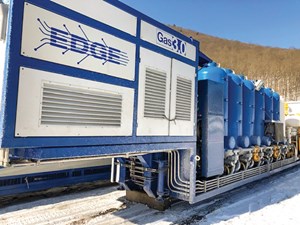
Edge LNG uses proven Cryobox technology, a mobile liquefaction unit delivered by trailer, Fig. 3. Each Cryobox unit can begin production within hours and can convert 1 MMBTU of gas per day, resulting in up to approximately 10,000 gal of LNG per day. This output is then distributed anywhere it is needed via Edge LNG’s virtual pipeline. Anywhere a truck can go, Edge LNG can go, Fig. 4.
The need for flaring (or venting) evaporates, the need to expand gathering pipeline networks fades away, and the cost-prohibitions against natural gas capture, use and sale crumble. Operators are then able to better pursue their environmental targets, to create a lucrative secondary revenue stream and to expand or take the brakes off oil production without fear of regulatory repercussions.
MARCELLUS SHALE OPERATIONS
In late January, Edge LNG expanded its operations in the Marcellus shale with another project award under its belt. We were selected by a large producer to capture and liquefy gas from its stranded wells in Tioga County, Pa. For the producer, this represents an opportunity to reap economic benefits on assets unreachable by pipeline. Initial operation is underway and is set to be ongoing until at least 2022.
The deal calls for Edge LNG to deploy its fully mobile, truck-delivered LNG equipment clusters (Fig. 5) to the Marcellus site. Each cluster includes two Cryobox liquefaction units. Edge will purchase the LNG that it extracts from the producer to deliver via its truck-based virtual pipeline to existing customers in the region. The company also has signed a deal to supply LNG to the City of Norwich, Conn., which will be used to provide natural gas to homes and businesses.
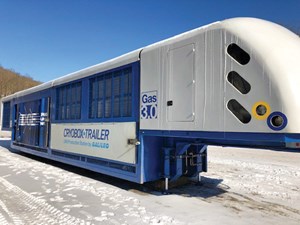
The Marcellus is an important region for Edge. There is lots of potential there, with a large number of stranded wells. So much gas goes unharnessed, purely because lack of access to a pipeline has meant that there is no economic way to take it to market. We provide operators with an opportunity to profit from wells that would otherwise not be produced, and we make it into valuable fuel. It’s a win-win solution.
The announcement follows Edge LNG’s U.S. launch and first deal earlier this year. That deal saw the company successfully monetize a source of previously stranded gas in the Marcellus field and deliver it as LNG to a New England utility. Edge LNG’s stakeholders include specialist international private equity firm Blue Water Energy and Galileo Global Technologies.
A flaring-free, venting-free, constraint-free shale industry is within our grasp. Would the last operator still flaring please turn out the light?
- Advancing offshore decarbonization through electrification of FPSOs (March 2024)
- Digital transformation: Accelerating productivity, sustainability in oil and gas (November 2023)
- Technological advances increase efficiencies and flexibility (November 2023)
- Volatile organic carbon emissions in oil and gas industry: Impact and mitigation (November 2023)
- Technological innovation delivers transformative product suite to upstream sector (November 2023)
- Executive viewpoint (August 2023)

